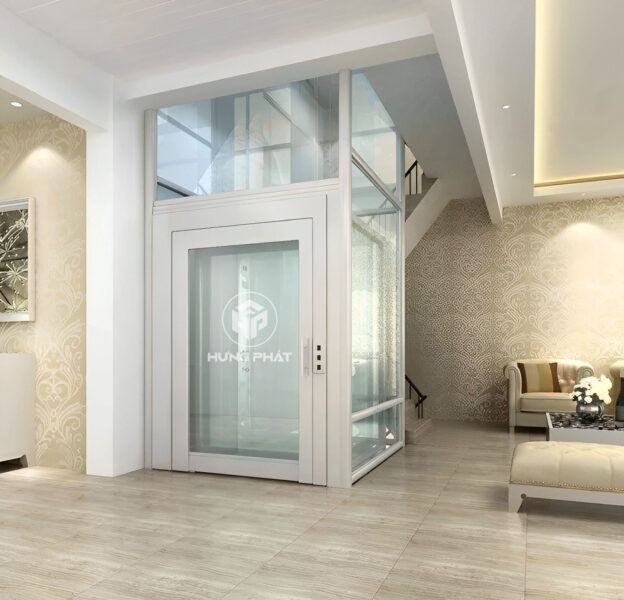Hydraulic elevators designed to date have undergone great improvements in both design, technology and quality. Today meets the needs of customers who need advanced mechanical systems to handle the significant tonnage of elevator cabins and their goods.
On the other hand, customers need to have a passenger management mechanism to avoid overloading, in addition to thoroughly understanding how the elevator operates to keep the elevator operating most effectively and smoothly. most loving. In the past, understanding an elevator was extremely simple.
Hydraulic elevators have the following benefits
– Imported Hydraulic elevators are convenient to install because they do not require a pit and can take advantage of empty spaces in the house or the house’s skylight.
– Absolutely safe and there has never been an incident of cable breakage or cable slipping causing the elevator to fall or a technical error.
– Compared to conventional structures, counterweights are not used, so the elevator box is 30% larger.
– You do not need to worry about finding a place to dig a pit (pit is about 300cm compared to 1.5m for conventional ladders), because the entire structure is on the side of the ladder, so there is absolutely no need for a pit.
– The top floor is 3m and can be used as a hydraulic elevator. For elevators without machine rooms, the required height is 3m to 4.5m and for elevators with machine rooms, it is 5.5m to 6m. Because the distance between the cabin and the ceiling is 30cm, it is suitable for villas and projects with limited building height or renovation projects that want to install elevators.


Structure of hydraulic elevator
It’s just a crate attached to a lifting system. You just need to tie a rope to the box and you have a primitive elevator. With today’s advanced technology, there are two types of elevators:
– Hydraulic elevator
– The elevator runs by tractor through a cable system.
– Hydraulic elevators lift the elevator cabin using a hydraulic piston, a directional translation piston mounted inside a cylinder. A rotary pump is connected to the cylinder by a fluid (usually the fluid is usually specialized oil).
Hydraulic elevators are composed of:
– A liquid storage tank
– A pump, powered by an electric motor
– A valve between the cylinder and the tank
– The pump forces oil from the tank into a pipe leading to the cylinders. When the valve is opened, the pressurized fluid will take the easiest path and return to the fluid reservoir. But when the valves are closed, the pressurized fluid has nowhere to go except into the cylinder and pushes the elevator piston upward.
– When the elevator cabin is level, the control system will send a signal to the electrical cabinet to gradually turn off the pump. No fluid flows into the cylinder, but the fluid that is already in the Piston cannot escape (it cannot flow back through the pump and the valves remain closed). The piston is based on the fluid, and where is the cabin located.
– When the solenoid valve is opened, the liquid that has collected in the cylinders can flow out to the liquid reservoir. The weight of the cabin and cargo pushes down on the pistons, the fluid in the piston flows into the tank. The cabin gradually descends. Stopping the cabin on a lower floor, the control system closes the valve. In order for the oil in the cylinder to return to the oil tank, the elevator control system sends a signal to the valve to open and close. The valve is operated electrically and by an electromagnetic switch.
Technologies applied in hydraulic elevators today
– Currently, there are many technologies applied to home elevators, technologies that are applied effectively and meet safety standards used in Vietnam including: conveying cables, screws, hydraulics, gears. , chain. Among them, cable loading, screw and hydraulic are the most commonly used.








Reviews
There are no reviews yet.